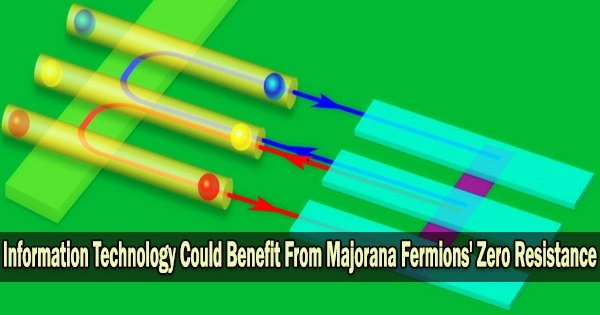In Matter, a new multi-node FLEET review examines the hunt for Majorana fermions in iron-based superconductors.
Ettore Majorana’s elusive Majorana fermion, or “angel particle,” which exhibits both particle and antiparticle behavior, is remarkably stable rather than self-destructive.
In order to solve the escalating energy consumption of contemporary electronics (which already accounts for 8% of global electricity usage), majorana fermions promise information and communications technology with zero resistance. They also promise a sustainable future for computing.
Topological superconductors are also the primary candidate materials for implementing topological quantum computing due to the Majorana zero-energy modes that they include.
The existence of Majorana fermions in condensed-matter systems will help in FLEET’s search for future low-energy electronic technologies.
The angel particle: Both matter and antimatter
Each of the fundamental antiparticles, known as fermions, includes electrons, protons, neutrons, quarks, and neutrinos. The mass of an antiparticle is equal to that of its normal companion, but its electric charge and magnetic moment are the opposite.
Our article reviews the most recent experimental achievements in these materials: how to obtain topological superconductor materials, experimental observation of the topological state, and detection of Majorana zero modes.
Professor Xiaolin Wang (UOW)
Conventional fermions and anti-fermions make up matter and antimatter, respectively, and when mixed, they destroy one another.
“The Majorana fermion is the only exception to this rule, a composite particle that is its own antiparticle,” says corresponding author Prof. Xiaolin Wang (UOW).
Since it has two opposing qualities (i.e., a positive and a negative charge), which make it neutral, and because its interactions with the environment are exceedingly weak, the Majorana particle has eluded detection despite rigorous searches for it for many decades.
Topological superconductors: Fertile ground for the angel particle
Despite intensive investigations in high-energy physics facilities like CERN, the Majorana particle has not yet been identified. However, it may exist as a single-particle excitation in condensed-matter systems where band structure and superconductivity coexist.
“In the last two decades, Majorana particles have been reported in many superconductor heterostructures and have been demonstrated with strong potential in quantum computing applications,” according to Dr. Muhammad Nadeem, a FLEET postdoc at UOW.
It was recently reported that Majorana particles could be held in iron-based topological superconductors without the need for the creation of heterostructures, which is important for use in practical devices.
“Our article reviews the most recent experimental achievements in these materials: how to obtain topological superconductor materials, experimental observation of the topological state, and detection of Majorana zero modes,” says first author UOW Ph.D. candidate Lina Sang.
In these systems, quasiparticles may impersonate a particular type of Majorana fermion such as “chiral” Majorana fermion, one that moves along a one-dimensional path and Majorana “zero mode,” one that remains bounded in a zero-dimensional space.
Applications of the Majorana zero mode
It would be helpful for researchers to direct the engineering of low-energy technologies whose functionalities are enabled by utilizing the distinctive physical characteristics of Majorana fermions, such as fault-tolerant topological quantum computing and ultra-low energy electronics, if such condensed-matter systems, hosting Majorana fermions, are experimentally accessible and can be characterized by a simple technique.
The hosting of Majorana fermions in topological states of matter, topological insulators and Weyl semimetals will be covered in this month’s major international conference on the physics of semiconductors (ICPS), being held in Sydney Australia.
In the IOP 2021 Quantum Materials Roadmap, the role of intrinsic spin-orbit coupling (SOC) based quantum materials is examined for topological devices based on Majorana modes, with evidence presented at the interface between strong SOC materials and superconductors as well as in an iron-based superconductor.
















